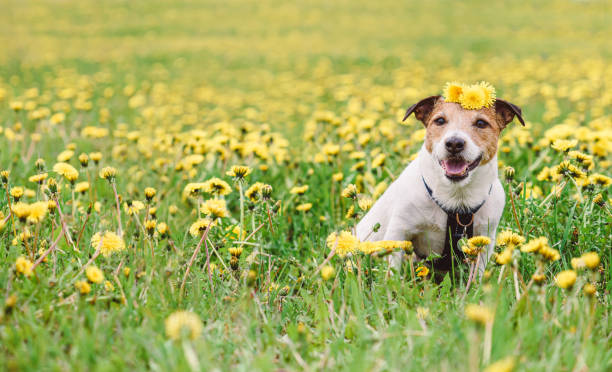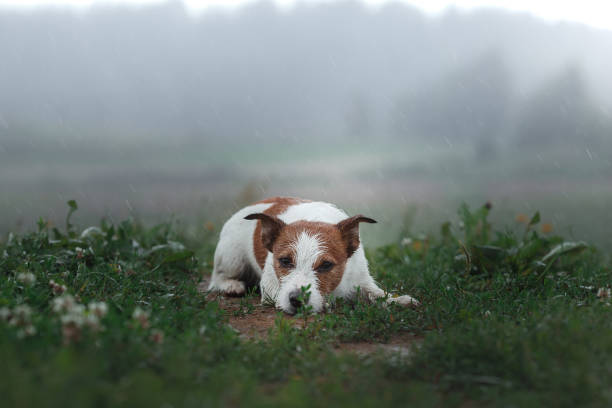The Impact of Weather on Dog Health and Exercise
Wind, ice and snow can make it difficult for dogs to get enough physical activity. Dogs that do not get enough exercise can become bored and behave inappropriately such as whining, barking or digging.
This study explored owner perceptions of the impact of summer and winter weather on their dog’s ability to be active, including their use of mitigation actions such as cooling coats.
Winter
Like humans, dogs are prone to discomfort and illness in cold temperatures. The onset of cooler weather can impact their health, wellbeing and ability to exercise, as well as impact their owners’ motivation to take them outdoors.
The onset of winter prompts dogs to burn more calories to maintain their body temperature, which may increase their food intake and lead to weight gain. To combat this, consult your vet to rework your dog’s diet and provide nutrient-dense foods.
In colder weather, low humidity and indoor heating can cause dry, itchy skin for dogs. Your vet may recommend a hydrating skin and coat supplement to help support your dog’s wellbeing.

Snow and ice can be particularly dangerous for dogs who exercise in colder conditions. These surfaces can damage their paws and irritate their skin. They can also slip on ice and fall, potentially injuring themselves.
Despite the adverse effects of cold weather, many owners report that they still take their dogs out for regular exercise in winter. This is likely driven by the benefits of exercise and the desire to keep their dogs happy. This is a concern as insufficient activity could lead to long-term health issues and behavioral problems in the pet population, including obesity and canine hyperactivity disorder (HRI).
Spring
As temperatures begin to warm, dogs are chomping at the bit to get out of the house and into nature. This is great for their mood but also helps to burn calories and avoid weight gain, as well as helping them keep fit.
However, spring can bring a number of different triggers that can have an adverse effect on your dog. Some of these include thunder, a rise in humidity and the presence of mosquitos. These can be anxiety-provoking for some dogs, especially those who are thunder-phobic (a condition characterized by behavioural symptoms such as panting, whimpering and hiding).
Other triggers can include heightened levels of outdoor pollution, increased rain or ice, and changing of the daily rhythm of natural light. The latter can cause a seasonal affective disorder in some dogs, similar to humans.

As temperatures climb in summer, more and more owners report reducing their daily exercise frequency with their dogs due to the hot weather. This can put dogs at risk of over-exerting, leading to exertional heat stress or potentially fatal heart attacks. Some dog breeds such as brachycephalic breeds may be more susceptible to heat and need extra care when exercising outdoors in high temperatures. Dog owners also report using mitigation actions such as carrying water for their dogs to facilitate activity in hot weather.
Summer
Many pet owners report that extreme summer heat reduces the duration and vigour of their dog’s exercise. This is especially true of dogs with flat face breeds such as the Brussels Griffon, Cavalier King Charles Spaniel and English and French Bulldogs, whose physiology makes it harder for them to efficiently move air through their noses and tracheas.
This is a concern because exercise is a critical part of a healthy diet for pets, and canines need a minimum of 120 minutes of daily physical activity to maintain a positive energy balance. If less active dogs experience the impact of summer heat, it will likely have a long-term negative impact on health and weight status.

The current study used a survey approach to explore owner perceptions of the impact of both winter and summer weather on their dog’s ability and willingness to exercise. Owners were asked to report their dog’s CAS on a five point scale (much more; much less; no change; a little more) and whether they felt that their dogs were affected by the weather.
The results indicate that owners perceived a greater impact of summer than winter weather on their dog’s CAS, with higher scores reflecting a stronger impact. This was influenced by skull shape, bodyweight, sport participation, age, sex/neuter and daily exercise. These results are consistent with previous studies examining HRI.
Fall
Fall is a beautiful season, but it can also be dangerous for dogs. Cooler temperatures and shorter days mean less exercise, which can lead to weight gain and other health problems.
Fall also means a time of falling leaves, which can be hazardous for dogs. Piles of leaves can become hiding places for small sticks and branches that could be stepped on or jumped over. Make sure to keep your dog away from any large leaf piles. Instead, try creating a pile of your own in the backyard for them to play in.
As the weather gets cooler, dogs might go outside more often. On your fall walks, be mindful of your surroundings as it gets darker earlier and cars are more likely to be on the road at dusk. Keep your dog on a leash at all times, and be sure they wear a reflective vest or collar.
The season of fall starts with the autumnal equinox, which happens on September 22 or 23 in the Northern Hemisphere and March 20 or 21 in the Southern Hemisphere.

